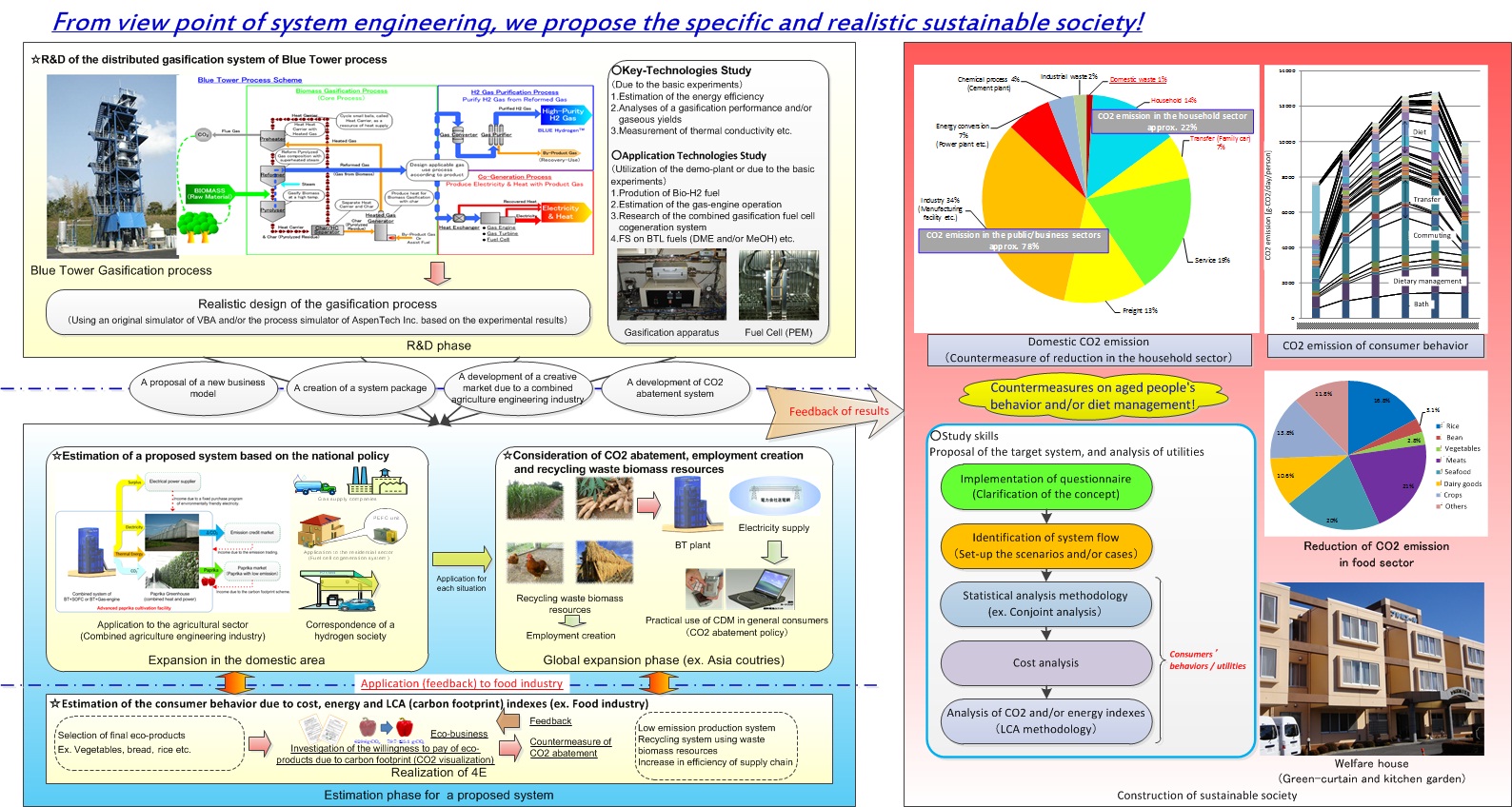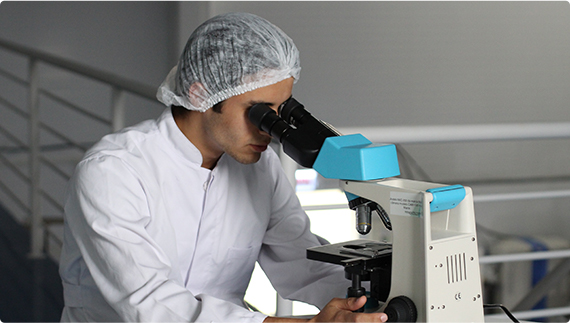Dowaki Lab is one of Japan's leading research groups on biomass gasification
In our laboratory, we study the environmental friendly energy systems from the viewpoints of analytic systems engineering. Especially, we focus on the biomass gasification process of Blue Tower, and the advanced technologies including the derived systems are considered in order to realize them in the domestic areas and/or the foreign countries. For our purpose, we execute the basic chemical experiments, the process simulator (AspenTech, etc.) based on the results, the environmental analysis due to LCA methodology, the economic studies and the optimization estimation (GAMS). In addition, we implement questionnaires for users in order to become a more functioning system by estimating their behaviors. These studies would contribute to the creation of sustainable business model. Recently, we also make collaboration with companies, public groups and/or foreign organizations, and we try to promote our proposed system in consideration of the 4E framework (Energy, Environment, Economic, and Education). Finally, we hope that the realization example of successful renewable energy system will be created by our research results.
Energy
Environment
Economic
Education
Kyoto protocol has come into effect in 2005, the technology on CO2 emissions mitigation has developed significantly. The biomass energy system, that is, the energy system using biomass materials such as wood, organic waste, sewage and similar material, is one of the promising energy systems to abate CO2 emissions. Although gasification technologies have attracted attention from all over the world, as one of the future technologies, their energy efficiencies are quite different, due to the energy conversion methodologies. Under these circumstances, the energy production cost is likely to still be high, even if related subsidies, environmental regulations and/or policies are put in place to support them. In the early stages, it was thought that the biomass energy system, through gas-engine cogeneration, would be a mainstream. However, since there is a discrepancy between the demand and the supply, that is, since the produced energy cannot be stored, the energy of electricity and/or heat would be excessive.
Consequently, in such a system, CO2 emissions mitigations could not be realized, and the energy production cost would be expensive. With this as its background, the Japanese government has tried to promote the biomass energy system as an effort to solve global warming. For instance, the Ministry of Economy, Trade and Industry (METI) predicted the biomass energy use of 39.1 PJ in the near future. The BTL fuels would be the promising energy as alternative energies of diesel oil or gasoline in the future. Of course, on the production cost of BTL fuel, the efforts to decrease the cost of 40 yen/L by 2015 would be necessary (METI 2007). The Ministry of Agriculture, Forestry and Fisheries (MAFF) also predicted biomass energy use of 110.5 to 210.1 PJ in the near future, too. Especially, MAFF has a project to produce BTL fuel of 5.0×108 L in the transportation sector (MAFF 2006).
Next, the annual amount of hydrogen gas that was consumed in 2002 was 1.5 to 2.0×1010 Nm3 in Japan. Half of this hydrogen energy was produced from fossil fuel. In 2020, the Japanese government has a target of introducing 5 million fuel cell vehicles. If this is realized, the demand for hydrogen gas will increase by approximately 1.4×1010 Nm3. Hence, hydrogen energy from renewable energy resources is important from the viewpoint of CO2 emissions mitigation. Under the above circumstances, we understood that there was good potentiality to produce BTL and/or Bio-H2 fuels. However, we have to indicate the successful business model at the earlier stage in order to expand the eco-business using this gasification process. It might be necessary to concentrate the concrete application system through BT process.
Furthermore, we considered the acceptability for the related facilities in agriculture or a forestry field. Because the environmentally friendly system such as a PV system or a fuel cell co-generation system is still not enough to be promoted for those facilities. That is, there would be potential to combine the biomass energy system which is environmentally friendly with the agriculture related facilities. In addition, MAFF contribute to the global warming protection through the carbon-footprint of agricultural products. The ministry has a few subsidy menus on the promotion of the system. Also, on the surplus energy of electricity, there are institutions by which the energy companies are obliged to purchase them with additional fees. Using the above institutions and/or subsidy menus under the leadership of the Japanese government, we considered the agricultural products harvesting system in which the biomass gasification (BT) process with gas-engine or fuel cell is assumed to be introduced.

In our laboratory, we propose the several energy paths from the viewpoints of system analysis engineering including the creative business model by which the sustainable development would be realized. The R&D phase has already executed enough, and would move to the stage of the creation of optimal business model such as agriculture and/or food industries in order to promote the system more effectively. For the entire system design, we analyzed CO2 emissions and/or energy intensities due to Life Cycle Assessment (LCA) methodology. This methodology is very important and/or useful to create the optimal energy system. For the purpose of grasping the consumer behavior, we execute questionnaire, and estimate the willingness to pay using the conjoint analysis method.
As another topic, the analyses on other renewable energy systems (EV, FCV and/or a mobile phone with PEFC etc.) are executed, and we think about the abatement of indirect CO2 emission in our life style based on LCA methodology, too. The concrete research contents are shown as the following figure.
Keywords:

The Lab is one of a kind
With a combination of strong engineering activities, wide-ranging industrial partners, and vast arrays of international counterparts, this lab offers a perfect environment for executing multidisciplinary research activities and accomplishing collaborative works.
